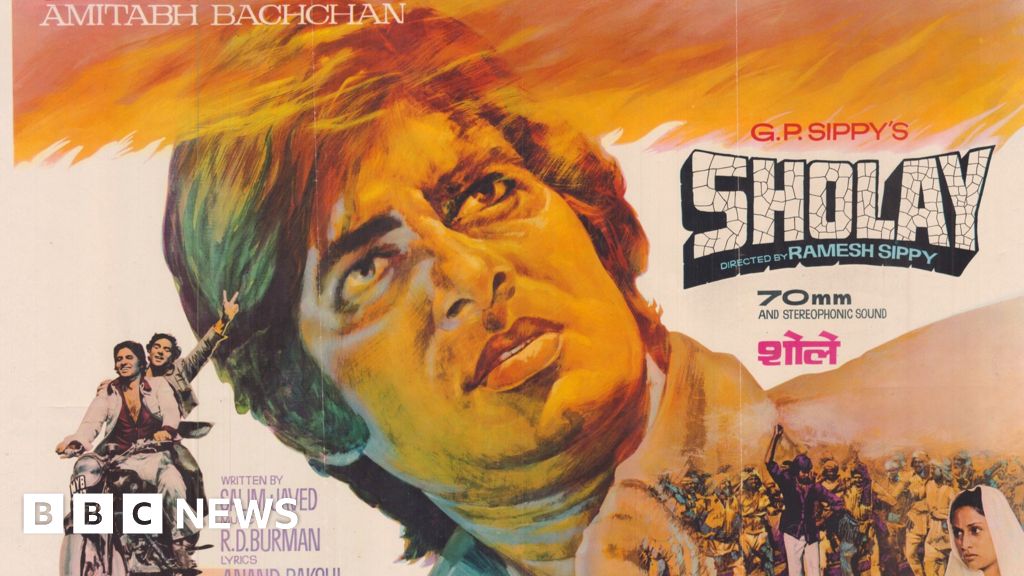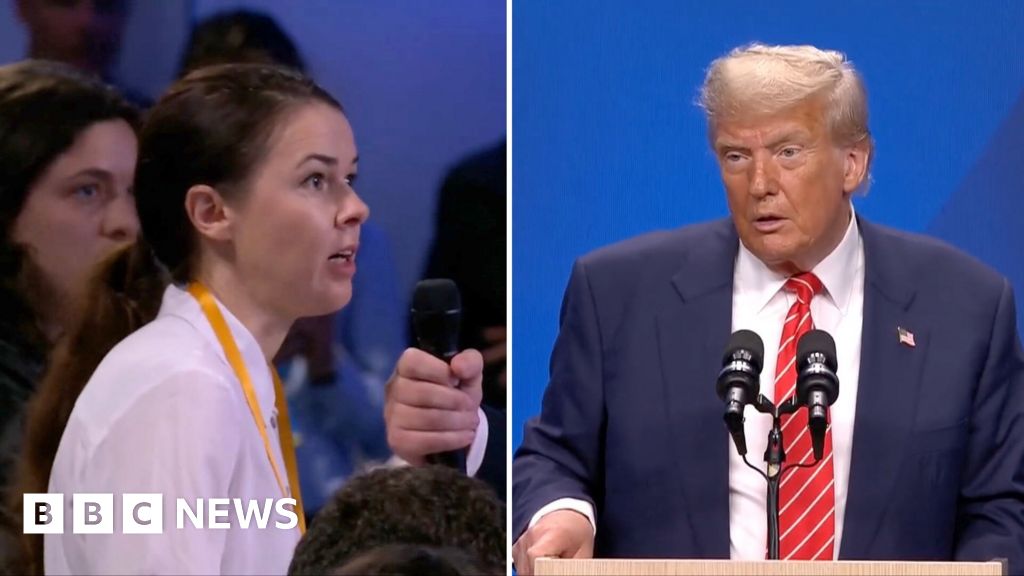It was a Thursday night in early May, and Durga Chew-Bose was crossing Sixth Avenue with a serious expression.
She was leaving the IFC Center, a movie theater in Greenwich Village where, when she lived in New York, she had gone to see art house films with a crew of other writers and artists she befriended in her 20s. On this warm evening some years later, she had attended a talk following a screening of her directorial debut, an adaptation of the French novel “Bonjour Tristesse” starring Chloë Sevigny and Lily McInerny.
Ms. Chew-Bose, 39, was dressed a bit like one of her characters: meticulously, and in a Parisian brand that discerning viewers may have picked out in her style-conscious take on the classic. But far from the French Riviera, where the film is set, its director was clad in all black, her dark hair tucked into her jacket collar.
She held a children’s picture book, a gift from a friend to bring home to Montreal, where she lives with her husband, the filmmaker and professor Jesse Noah Klein, and their young son, Fran.
“I wonder,” she said of the panel discussion that had followed the film, “if it was entertaining enough.”
How she came to write and direct this new “Bonjour Tristesse” isn’t so straightforward, though Ms. Chew-Bose, a consummate cinephile, has long had a sense that her working in film was inevitable.
Born to immigrant parents from Kolkata and raised in Montreal, she studied French literature and creative writing at Sarah Lawrence College in Bronxville, N.Y., graduating in 2009. Afterward, she lived in the Brooklyn neighborhoods of Boerum Hill and Crown Heights, falling in with the city’s young literati. Among them: Lena Dunham, whom Ms. Chew-Bose reached out to for an interview about one of Ms. Dunham’s early films.
“I remember thinking she was unusually elegant for someone in their early 20s,” Ms. Dunham said in an interview. “In the era of indie sleaze, she always carried herself more like a Joan Didion than a New York scenester,” she added, with “an inborn maturity and insight that seemed so out of reach for most of us. She had manners, style, restraint — we were all chasing various identities, and hers was totally formed.”
Ms. Dunham cast her as an extra in “Tiny Furniture,” the 2010 indie comedy that jump-started Ms. Dunham’s career, in a scene at a gallery — one of just a few other film credits to Ms. Chew-Bose’s name before she was asked to reimagine “Bonjour Tristesse.”
But it was Ms. Chew-Bose’s writing that had caught the attention of a pair of Toronto film producers, Katie Bird Nolan and Lindsay Tapscott, who in 2017 had her in mind to loosely adapt Françoise Sagan’s 1954 novel into a modern-day screenplay.
“When I read Durga’s writing, there’s a spell you fall under a little bit, and that’s kind of what we wanted to happen in the movie,” said Ms. Tapscott, who with Ms. Nolan runs the female-focused production company Babe Nation Films.
In particular, they had read Ms. Chew-Bose’s buzzy essay collection, “Too Much and Not the Mood,” which had been published that same year with Farrar, Straus and Giroux. The book gathered up Ms. Chew-Bose’s writings for small publications like Hazlitt and The Hairpin, where she had become known for enigmatic essays about living alone, her reluctance to correct people when they mishear her first name, and the meaning of an iPhone emoji she refers to as the “heart museum.”
Ms. Chew-Bose knows “how to make an image have a feeling,” said the writer Haley Mlotek, who worked with her at Ssense, the e-commerce site Ms. Chew-Bose transformed into a venue for literary writing when she became its editor in chief in 2020.
This was the sort of treatment Ms. Tapscott and Ms. Nolan wanted for “Bonjour Tristesse.” But when they reached out to Ms. Chew-Bose about the idea, she hesitated.
The novel had already been adapted by Otto Preminger in 1958. Then there was the tricky content: The work is a coming-of-age story that follows the teenage Cécile who in the novel has an easygoing — if erotically charged — relationship with her widower father, who has brought his girlfriend, Elsa, on holiday in the south of France. The trio’s carefree dynamic is disrupted when Anne, a friend of Cécile’s late mother, arrives on the scene, forcing Cécile to study and keeping her away from her summer boyfriend.
Romantic partners are swapped. Age gaps are disregarded. The source material seemed untouchable, and a bit dated.
“But I’ve learned that hesitation is really exciting,” Ms. Chew-Bose told the audience at the IFC Center that evening, seated beside Ms. Sevigny, who plays Anne, and Ms. McInerny, Cécile. “It’s something you can work with.”
Ms. Sevigny, too, said she had been uncertain at first about signing on for “Bonjour Tristesse.” But after reading Ms. Chew-Bose’s writing and speaking with her, she was sold.
“I was just really taken with her as a person,” Ms. Sevigny said in an interview. “I think people are very drawn to her mind.”
When in 2019 Ms. Chew-Bose delivered a rough outline of her screenplay to Ms. Nolan and Ms. Tapscott, it was brimming with the sort of choices that a director might make, they said in an interview. Though they had a sense Ms. Chew-Bose might be a natural choice to direct, they first sent her script to a handful of established directors. One replied that while he liked the script, there didn’t seem to be much room for his own creative touch in such a fleshed-out world.
“From Cécile’s P.O.V., still lying flat on the beach, lifelessly, we watch as she grabs a handful of sand and lets it run through her fingers in soft, yellow streams, running out like time,” reads a stage direction early in the screenplay.
The producers realized that Ms. Chew-Bose was already directing from the page. Why not invite her to do so officially? In 2021, they did, and she agreed.
The result is a meticulously crafted world where no detail has been spared — like the fake books she commissioned from her longtime friend, the graphic designer Teddy Blanks, and his wife, the New York Times book critic Molly Young, to serve as her characters’ summer reading. Or the vintage bathing suits and trendy accessories chosen by Miyako Bellizzi, the film’s costume designer, who roomed with Ms. Chew-Bose leading up to the 30-day shoot in Cassis, France.
Over dinner after the IFC screening, Ms. Bellizzi said that people who don’t know Ms. Chew-Bose well might not imagine how funny she is: “We would be on the floor laughing.”
The next morning, at the Waverly Diner, Ms. Chew-Bose joked that the restaurant’s ambience and crimson booths recalled the final scene of “The Sopranos.” But she soon turned pensive. The film was now out in theaters, she explained, over a spinach-and-mushroom omelet and gluten-free toast. Anyone could buy a ticket to see it.
“That’s obviously impossibly cool to me, as someone who loves movies, but I also feel vulnerable,” she said.
Ms. Chew-Bose knows her creative sensibility is “not for everyone.” The people she imagines enjoying her new film, or her writing, she continued, are readers, in the broad sense. Not bookworms, per se, but people who “can be alone with their thoughts” and can “read between lines.”
“Not knowing why something is moving you and being OK to live in that discomfort,” she added.
There is intimacy, Ms. Chew-Bose explained, in small touches. “I think it reveals a lot about people, what they notice,” she said. “I like specificity. I love people who can experience emotion through detail and not big swings. Although I admire big swings.”
Take, for instance, the moment in “Bonjour Tristesse” when the three women at the center of the film — Cécile, Elsa and Anne — carefully cut, or bite un-self-consciously, into an apple, revealing their personalities, psychological states and feelings of identification with one another.
It’s art that is similarly attuned to both the mundanity and the romance of everyday life that most resonates with Ms. Chew-Bose. In that final “Sopranos” scene, for example, she said, as Tony selects Journey’s “Don’t Stop Believin’” from a jukebox and other characters file into the diner, what really gets her is that his daughter, Meadow, is “just trying to parallel park.”
Ms. Chew-Bose said she has always been sensitive, her radar finely calibrated. As a girl, she worried that “maybe I don’t understand the big things — big ideas. Maybe I’m having a hard time finding ways to express life, death, loss, joy — and so I need to describe the bread, and then that’s a vessel for joy.”
Growing up in Canada, she focused on traditional markers of achievement — coursework at her French-immersion school, student council. Her father, Rana Bose, an engineer, writer, poet and playwright, and her mother, Dolores Chew, a professor of history and liberal arts, separated when she was 8, and later divorced.
In May 2023, just days before “Bonjour Tristesse” would begin shooting, Ms. Chew-Bose’s father died after a yearslong illness with multiple myeloma.
“He loved watching me stand somewhere with an audience, holding attention,” she recalled. She went on: “I would have called him right after this,” referring to this conversation. “Like, ‘Baba!’ — I would have turned into his daughter again.”
Ms. Chew-Bose is already deep into her next film projects, two original screenplays she is developing with Ms. Nolan and Ms. Tapscott. One, “Dish Trick,” is “an unlikely found-family story” set in Montreal, she said. The other, “Soft as It Began,” is about the making of a film, and will be shot partly on location in Europe. She plans to direct both.
She said she anticipated the challenges that she now knows firsthand can come with filmmaking. No matter. “One thing I learned in making this movie,” she said, “is I’ve got to make things.”
Suddenly, with a flourish that Ms. Chew-Bose herself might have dreamed up, “Don’t Stop Believin’” came on over the restaurant speaker system. She put down her fork and raised her index finger in excitement, as a grin lit up her face.
Source link


















